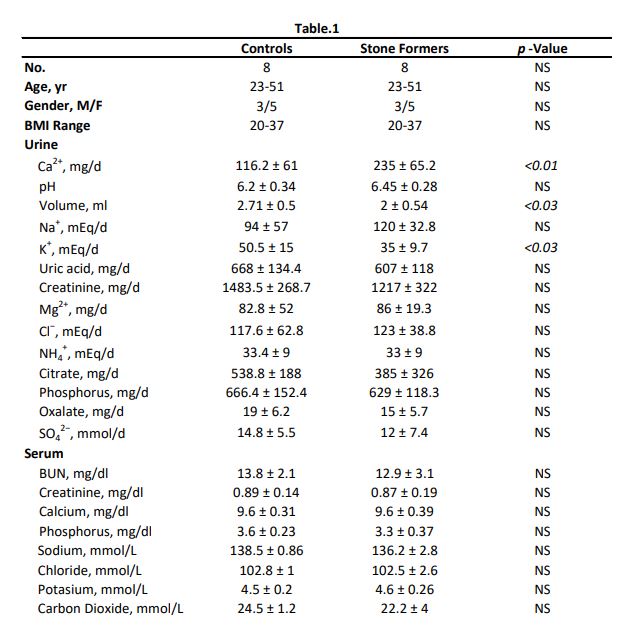Nephrology: Translational
Nephrology 2: CAKUT/Genetic Clinical and Basic Science
267 - Control Individuals but not Patients with Calcium Nephrolithiasis Secrete less Urinary Uromodulin after Short –Term Salt Loading
Publication Number: 267.251

Salar Bani Hani, MD, MBBS
Fellow Physician
University of Texas Southwestern Medical School
Dallas, Texas, United States
Presenting Author(s)
Background: Calcium (Ca2+) is the most common constituent of kidney stones, which affect 10% of the population. Renal Ca2+ absorption is regulated by the Ca2+-channel TRPV5. Uromodulin (UMOD) protects against Ca2+-nephrolithiasis and reduces hypercalciuria by enhancing TRPV5 membrane abundance. UMOD also stimulates tubular Na+ absorption via the Na+-K+-2Cl--cotransporter 2 (NKCC2) causing hypertension. High salt intake is another risk factor for nephrolithiasis. A one-week exposure to a high salt diet increases urinary UMOD secretion in healthy humans and rats. We hypothesize that a higher urinary UMOD secretion with a high salt diet compensates for the higher stone risk by enhancing TRPV5 membrane abundance and improving hypercalciuria.
Objective: Urinary UMOD secretion depends on genetic variants and is highly variable. We postulate that hypercalciuric stone-formers do not appropriately secrete urinary UMOD after a salt challenge, contributing to a higher risk of Ca2+-nephrolithiasis.
Design/Methods:
This is a prospective, randomized, cross-over study. We included eight Ca2+-stone-formers and eight matched control individuals randomized either to control diet meals (low Na+, low Ca2+) or a high salt diet. Given the challenges of a week-long exposure to high salt we provided the diet for two days followed by a washout week. Afterwards the participants received the diet they were not exposed to previously. After each diet, we obtained 24-hour urines and fasting serum studies. Urinary UMOD was detected by western-blot and quantified using ImageJ software and a UMOD standard. Studied urine volume was corrected for urine creatinine.
Results: 1. We have currently data for 16 subjects out of anticipated 24 subjects. 2. While on the control diet, there was no significant difference for urinary UMOD secretion between stone-formers and control individuals. 3. In contrast to our hypothesis, we found that urinary UMOD secretion was significantly reduced after a short-term salt load in control individuals but not in stone-formers
Conclusion(s): 1. In contrast to published data, we cannot confirm a lower baseline urine UMOD level in Ca2+-stone-formers. 2. While salt loading for seven days increases urinary UMOD secretion in humans and rats, we found that salt loading for two days had the opposite effect in controls. Urinary UMOD secretion may be different after short versus long salt loading. 3. As UMOD enhances NKCC2 contributing to hypertension, acute downregulation of UMOD after a salt load makes physiologically sense. 4. After salt loading, we show a lower urinary UMOD secretion in controls but not in Ca2+-stone-formers.
.jpg)
